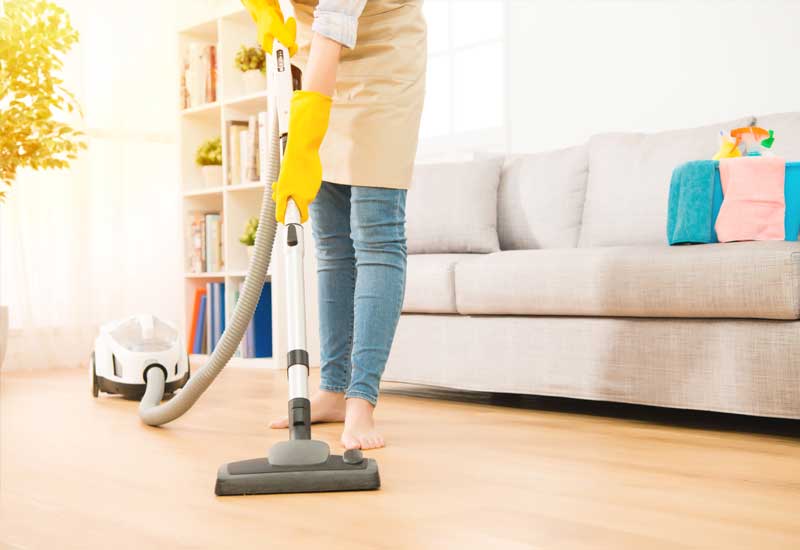The Most Effective Everyday Cleaning Practices: Scrub the Surfaces, Vacuum Carpets, and Keep Clutter at Bay
The Most Effective Everyday Cleaning Practices: Scrub the Surfaces, Vacuum Carpets, and Keep Clutter at Bay
Blog Article
Comprehending the Requirement for Thoroughly Sanitizing and Sanitizing Often Touched Surfaces in High-Traffic Areas
In the world of public health and wellness and security, the precise disinfection and sanitization of frequently touched surfaces in high-traffic locations stand as paramount actions in preventing the spread of hazardous pathogens. By exploring the numerous elements of surface disinfection, from the risks linked with disregarding cleansing procedures to the effective methods that can be used, a more clear understanding arises of the important function these practices play in safeguarding public wellness.
Relevance of Surface Area Disinfection
Emphasizing the comprehensive disinfection of high-traffic surface areas is important in maintaining a sanitary atmosphere and avoiding the spread of hazardous virus. High-touch surface areas such as door handles, light switches, lift buttons, and countertops serve as breeding grounds for viruses and bacteria. Normal sanitation of these surfaces is crucial to decrease the threat of contamination and transmission of health problems.
By executing a durable disinfection method, institutions and companies can develop a much safer setting for clients, employees, and visitors. Appropriate surface area disinfection not just mitigates the spread of infectious illness yet also imparts self-confidence in the sanitation and safety of the facilities. This aggressive approach demonstrates a commitment to health and wellness and health, which is particularly essential in high-traffic locations where the chance of direct exposure to pathogens is heightened.
Furthermore, surface area sanitation plays a crucial role in general infection control methods. Incorporated with hand health techniques, wearing masks, and maintaining physical distancing, thorough sanitation of high-touch surfaces forms a comprehensive defense against the transmission of damaging bacteria. Prioritizing surface disinfection is a vital element of an alternative technique to wellness and security in shared spaces.
Risks of Overlooking Cleansing Practices
Ignoring extensive disinfection of high-traffic surfaces significantly heightens the threat of microbial and viral contamination, presenting a serious threat to the health and wellness of people often visiting these areas. Failure to apply correct cleansing methods can result in the accumulation and spread of harmful virus, including infections and germs, on frequently touched surface areas such as doorknobs, handrails, elevator switches, and counter tops.

Moreover, ignoring the importance of complete cleaning not just compromises the health of people but also undermines efforts to keep a sanitary and tidy environment. It is vital to acknowledge the significance of correct disinfection methods in protecting against the spread of infections and guarding public health and wellness.
Reliable Disinfection Approaches
To preserve optimal sanitation and decrease the threat of contamination on high-traffic surfaces, utilizing efficient sanitation methods is crucial. One of one of the most common and reliable sanitation methods is making use of chemical disinfectants. These items can vary in stamina and make-up, with some targeting specific virus like infections or microorganisms. It is essential to adhere to the manufacturer's instructions for look at here appropriate dilution, call time, and ventilation when utilizing chemical disinfectants to ensure their performance - Clear Out Any Clutter.
One more reliable technique is the usage of UV-C light. UV-C light has been shown to be effective in eliminating a broad variety of bacteria by interrupting their DNA framework, therefore stopping them from duplicating. It is necessary to make use of UV-C light appropriately, ensuring that the correct intensity and direct exposure time are used to accomplish the preferred disinfection results.
Furthermore, employing vapor cleansing as a disinfection approach can be extremely reliable, particularly on surfaces that are heat-resistant. Heavy steam can penetrate permeable surfaces and kill bacteria, infections, and other microorganisms efficiently. When making use of steam cleansing, it is essential to ensure that the surface gets to the needed temperature level for an adequate amount of time to assure proper sanitation.
Influence On Public Health And Wellness
The upkeep of high requirements of sanitation and disinfection on high-traffic surfaces plays an essential function in securing public health. Often touched surface areas in locations with high step, such as doorknobs, hand rails, elevator switches, and restroom facilities, offer as breeding premises for unsafe pathogens.
In high-traffic locations like flight terminals, schools, hospitals, and public transport systems, the effect of rigorous sanitation steps can not be understated. Focusing on the sanitization of frequently touched surface areas is a positive approach to advertising public health and wellness and boosting the security of people in shared spaces.
Carrying Out Regular Cleansing Procedures
Without delay instituting and adhering to a constant schedule of cleansing protocols is vital for maintaining the tidiness and safety of high-traffic surface areas. Regular cleaning methods are vital in Full Article avoiding the build-up of germs and microorganisms on regularly touched surfaces, specifically in areas with high foot web traffic. By applying a methodical technique to cleaning, companies can efficiently minimize the risk of illness transmission and create a much healthier environment for employees, clients, and the general public.
To develop an effective cleansing timetable, it is essential to determine high-traffic locations see this site that require frequent interest. These locations might include doorknobs, handrails, elevator switches, bathroom centers, and common equipment. Executing a regular cleansing routine that targets these surface areas numerous times a day can dramatically reduce the spread of damaging microorganisms and infections.
Moreover, utilizing appropriate cleaner and disinfectants is essential to making sure that surface areas are extensively disinfected. Normal training of cleansing team on correct cleansing strategies and the importance of adherence to the cleansing timetable is also vital in maintaining a sanitary setting. By focusing on regular cleansing methods, companies can advertise the health and wellness and wellness of people who engage with these high-traffic surfaces.

Conclusion
To conclude, it is essential to focus on thorough disinfection and sanitization of frequently touched surfaces in high-traffic areas to stop the spread of hazardous virus and keep public health. Ignoring correct cleaning methods can raise the risk of contamination and transmission of diseases. By executing regular cleaning procedures and utilizing reliable disinfection techniques, we can produce a more secure atmosphere for everyone (Scrub the Surfaces). It is important to acknowledge the importance of maintaining clean surface areas in high-traffic locations to make sure the wellness of the community.
In the world of public health and wellness and security, the meticulous sanitation and sanitization of frequently touched surface areas in high-traffic areas stand as paramount procedures in stopping the spread of hazardous virus. By checking out the various aspects of surface sanitation, from the risks connected with overlooking cleansing procedures to the reliable approaches that can be utilized, a more clear understanding emerges of the essential role these techniques play in protecting public wellness.Additionally, using steam cleansing as a disinfection technique can be very effective, particularly on surface areas that are heat-resistant. When utilizing vapor cleaning, it is essential to make certain that the surface reaches the called for temperature for an adequate quantity of time to guarantee appropriate sanitation.
In conclusion, it is critical to prioritize complete disinfection and sanitization of regularly touched surface areas in high-traffic areas to avoid the spread of damaging pathogens and keep public wellness.
Report this page